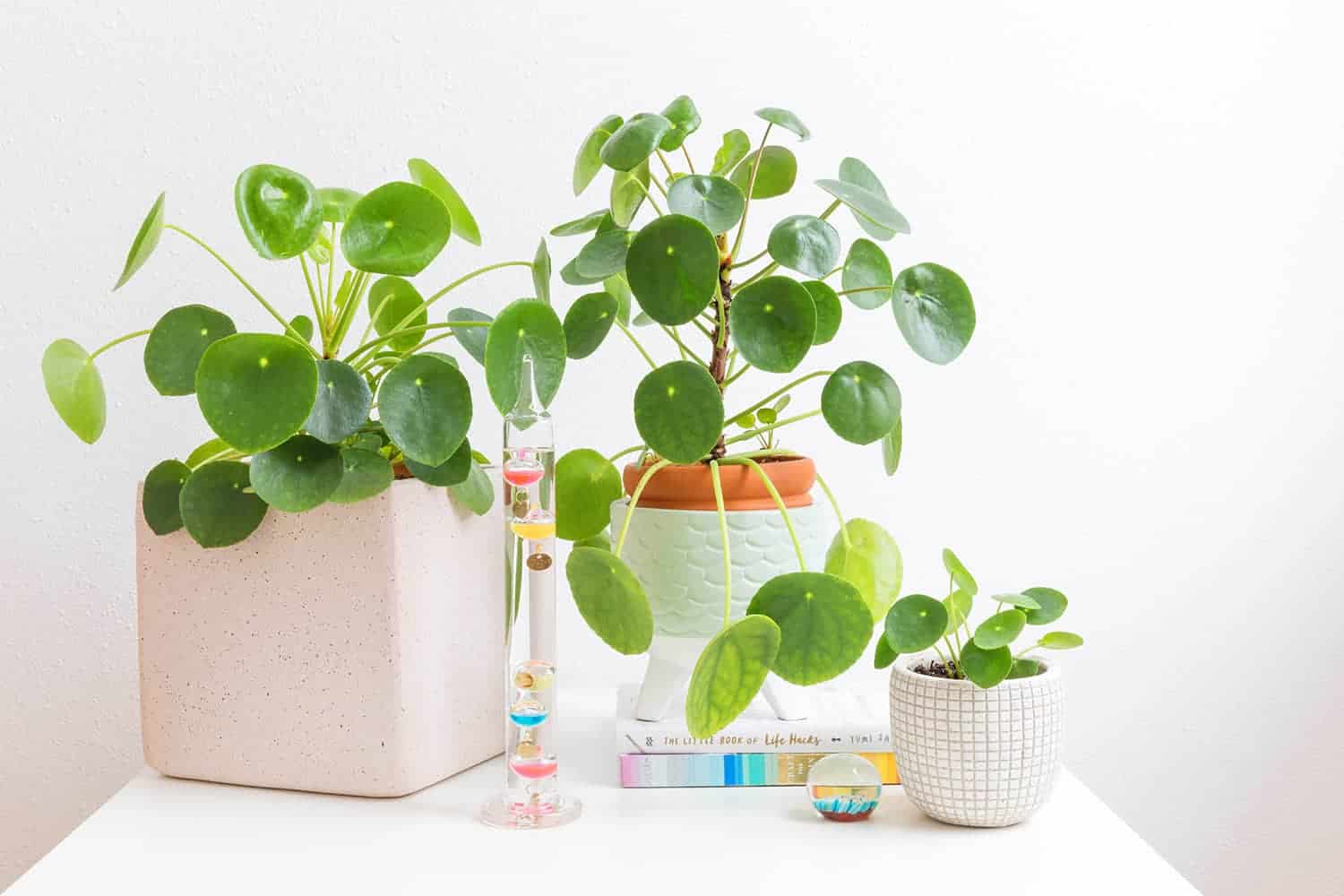
The pilea peperomioides, also known as the Chinese money plant, is a true gem. It’s playful, very pleasing to the eye, and fairly easy to care for.
The plant grows like crazy and then grows little babies so you can share it with friends! Each time I look at mine, I can’t help but smile. Their quirky form is like no other plant.
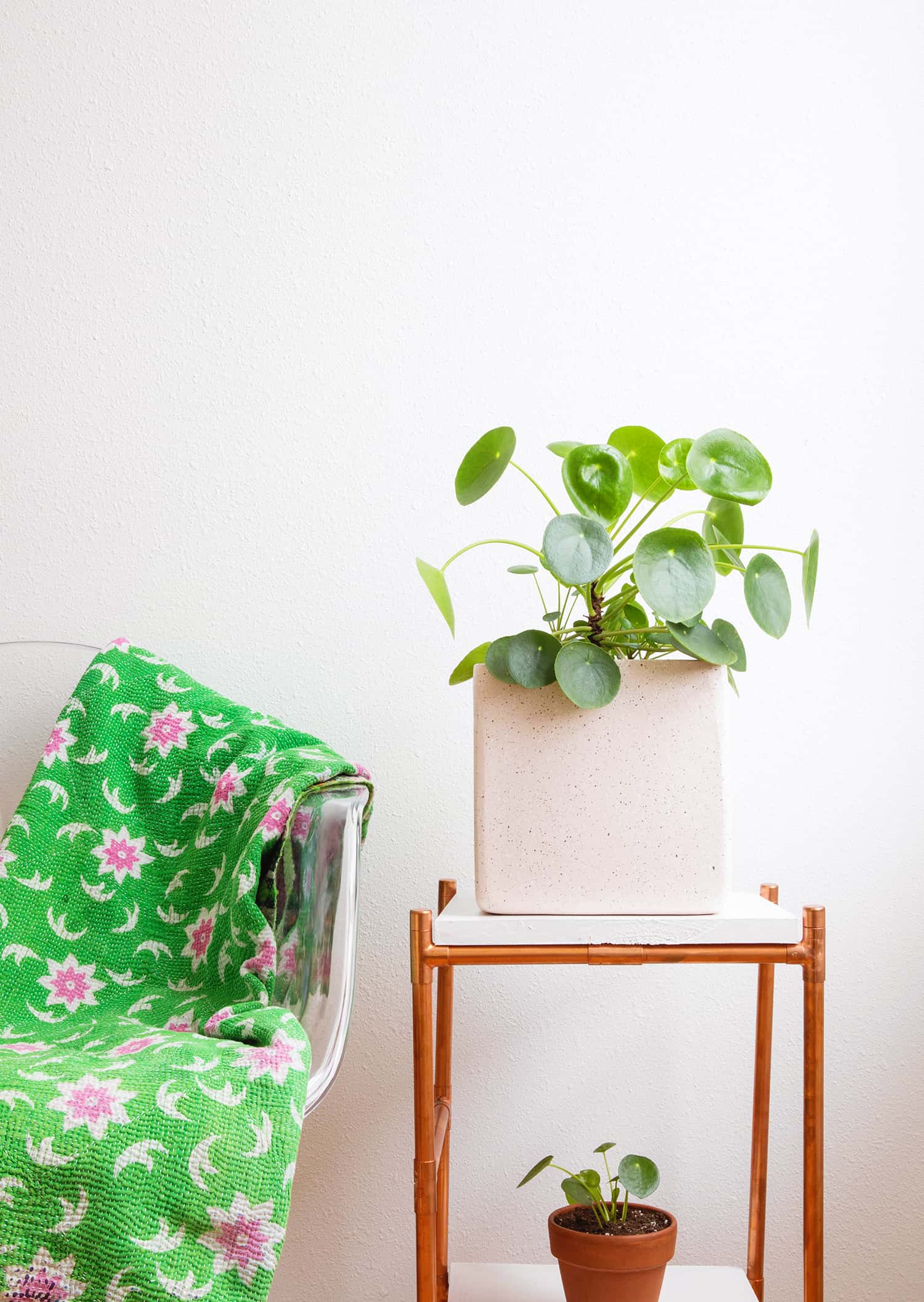

The plant slowly spread through people sharing its “pups,” and within the last several years, it has made its way here to the States. I love learning/reading the history about this plant. You can literally track it back to its exact location and the person who brought it and shared it.
Besides being an aesthetically pleasing plant, it’s also very easy to care for, and it’s quite hardy! Here are some tips for caring for the pilea:
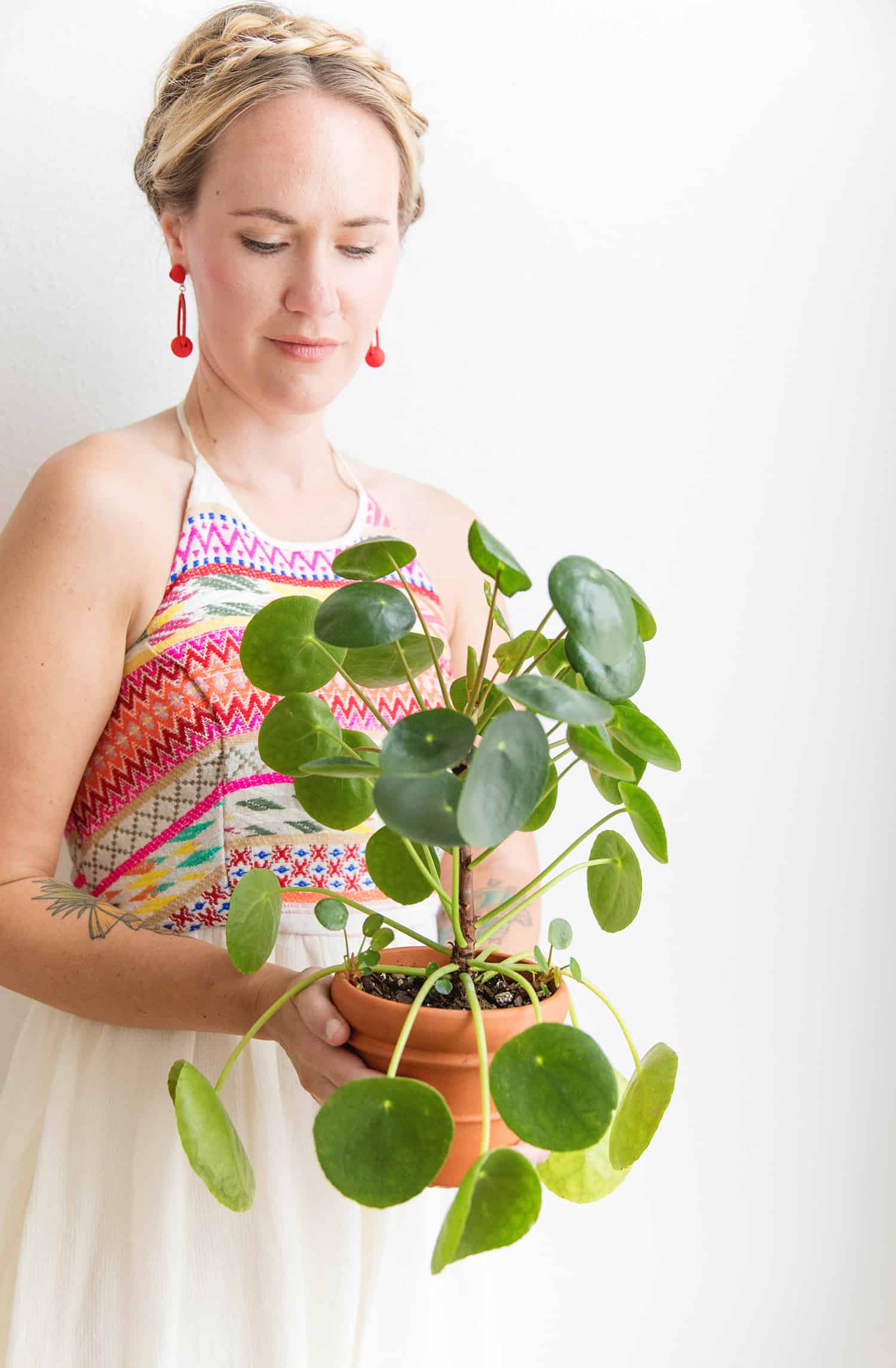
Potting
I find that repotting a pilea can really encourage growth—giving it some wiggle room will encourage the pups to spread out. To help prevent root rot, use a pot with a drainage hole.
If you have a pot that you love and it doesn’t have a hole, these drill bits are great for drilling a hole on the bottom of an earthenware pot. I love the trusty terracotta pot since they are utilitarian and simple. The terracotta is excellent because it is a natural clay and will let the soil breathe a bit (unlike a plastic pot).
Don’t get me wrong, you can use a plastic pot or a heavily glazed pot that has a drainage hole, but if you accidentally overwater your pilea, the terracotta will be more forgiving since it dries out a bit faster. If you have a decorative pot that you love, simply stick your terracotta pot inside your decorative one.
I will take the terracotta pot out of the decorative one for waterings, let it drain completely, and then stick it back in the decorative pot.
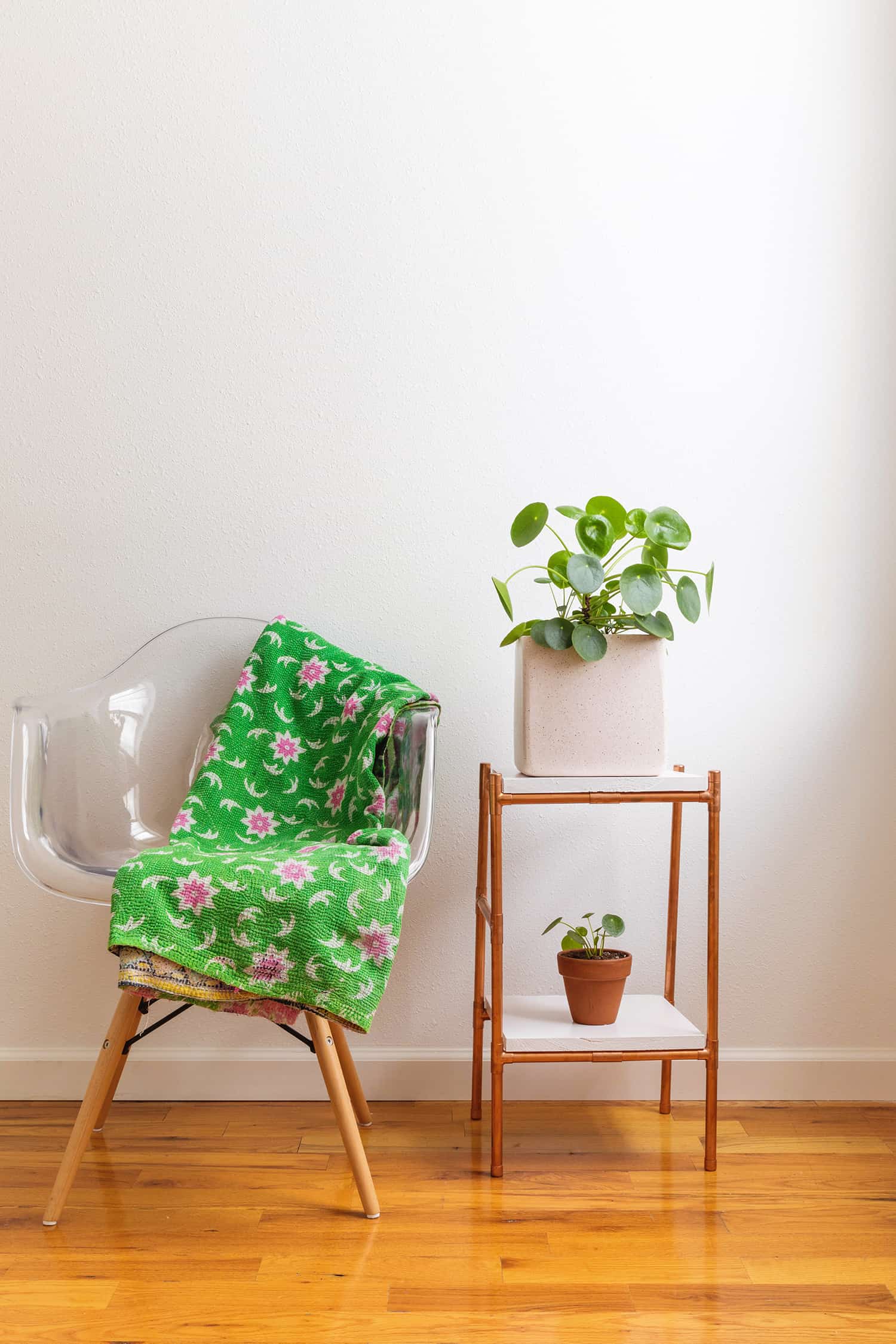
To repot your pilea, pour some small stones on the bottom about 1-inch deep. The rocks aid with drainage and will help your plant not succumb to root rot. For soil, I use a quality, well draining potting mix.
Your local greenhouse should have this, or you can pick some up at your local hardware store. My mix has a bit of fine sand in it. We have some pretty humid months where I live (in southern Missouri), so the sand helps dry the plant out a bit faster.

Watering
You have to water your pilea moderately, but do not overwater it. They like to dry out in-between waterings and they don’t like to stay soggy. I stick my finger in the dirt and lift the pot to see if it still feels heavy from the last watering.
If it feels dry to the touch, then I water it again. Let it dry out between waterings but be sure that it doesn’t get bone dry (although it is quite hardy and can handle it). I water mine once a week.
If I check the plant and it still feels moist, I’ll wait a couple more days and check again. The other day, a friend texted me a picture of her pilea which was drooping quite a bit. We came to the conclusion that it needed to be watered. It had dried out a bit too long!
The plant will tell you what it needs and when it needs it, so just keep a watchful eye. I asked a local greenhouse about the pilea and watering and they said one of the only ways to kill it is by overwatering.
When you water your pilea, never let it sit in water. Once you’ve watered it, make sure that you empty the excess water that catches in your bottom dish. If the dirt stays wet/soggy for too long, then the roots actually rot, which can likely lead to the death of the plant.
I am prone to overwatering, and it has taken me a good bit to rein in my need to “nurture” (aka overwater) the plant.
Light
The pilea loves the light! Bright indirect sunlight is what it needs. What does that mean? If you put your pilea on your front porch with the sun beaming down on it, then that would be direct light and it will burn.
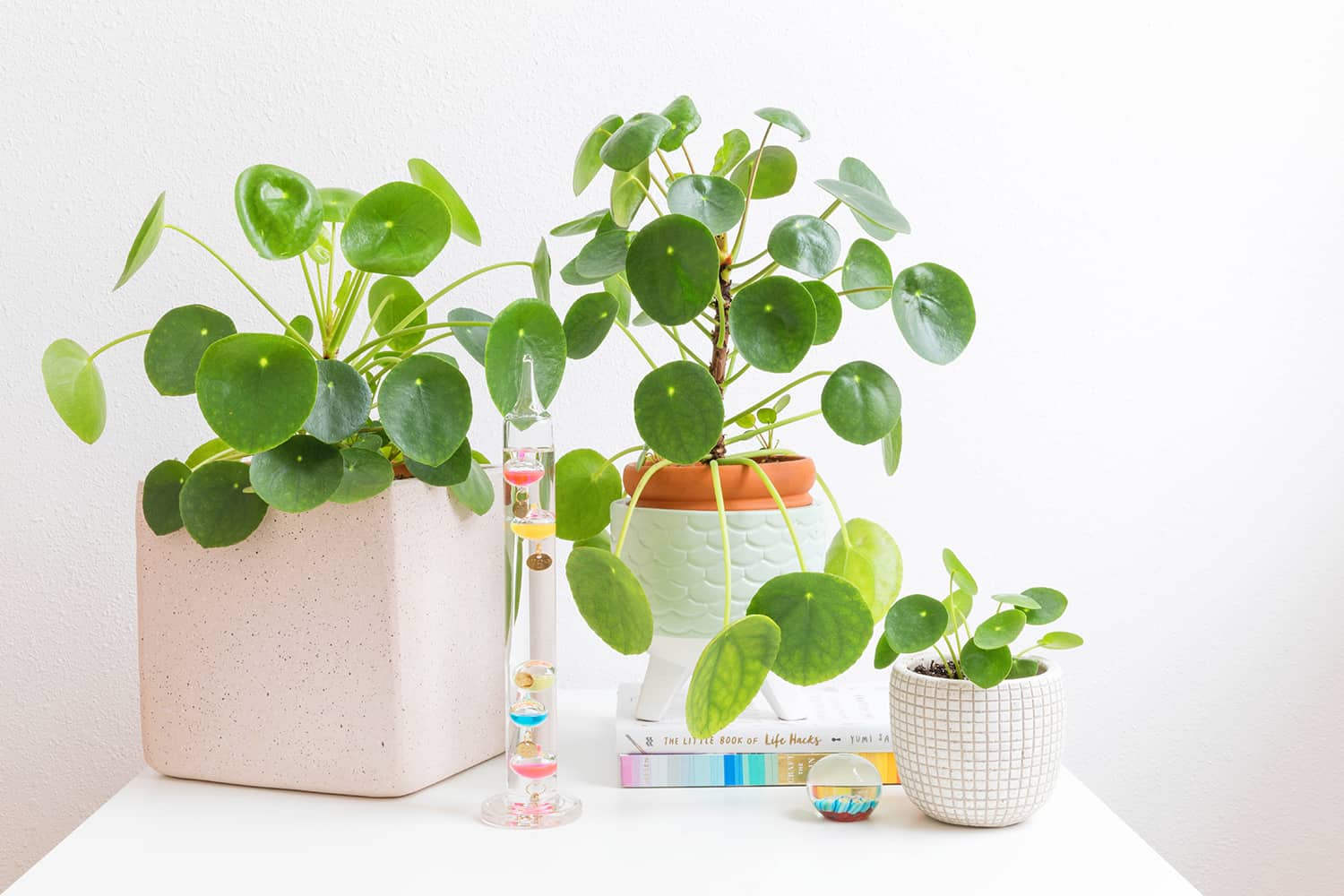
Keep them indoors near a bright window (which is indirect light). I put mine in the brightest window in my house and they love it. My mom had a pilea on her dining room table (it was low light) and it started getting long and leggy—a very long middle stem with just a few branches.
It was trying to reach for the light and looked like it wouldn’t make it much longer. She put it outside under her covered porch where it gets lot of indirect light and it is thriving again. It is no longer long and leggy! It is amazing how they adapt once you figure out what they need.
I have run out of window space in the house and I’ve put some of my pileas outside under a covered porch. They seem to love the summer air and are growing beautifully! As soon as the temperature starts to drop, I will bring them back in.
Another tip about lighting is that the pilea will follow the light and start leaning towards it. It’s kind of funny to see them reaching for the window like they are trying to break free!
I rotate mine each watering and that helps to keep them straight and balanced. Keeping the leaves dusted helps them get more light as well. Use a damp cloth and lightly rub off any dust to keep the leaves healthy and shiny.
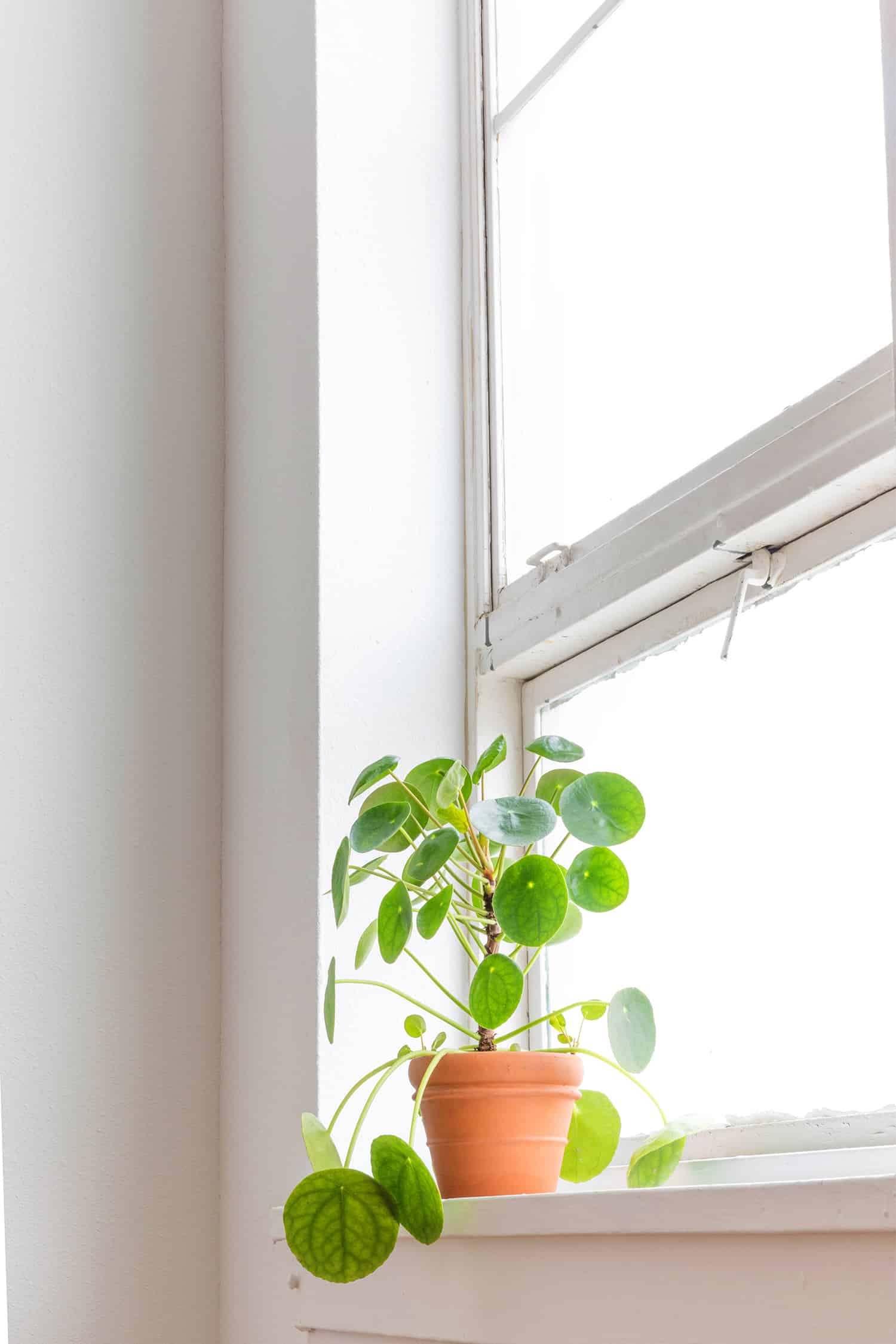
Propagating
One of the best parts of a pilea plant is how fast it reproduces baby plants! As it matures, little babies will pop out of the soil or grow from the stem (near the dirt). These babies are called “pups.” The pups actually grow from the root system and pop out of the dirt on top.
When the pups start growing, you can either cut them off of the mother plant or let them grow. Letting them grow creates a full mother plant (which is beautiful)!
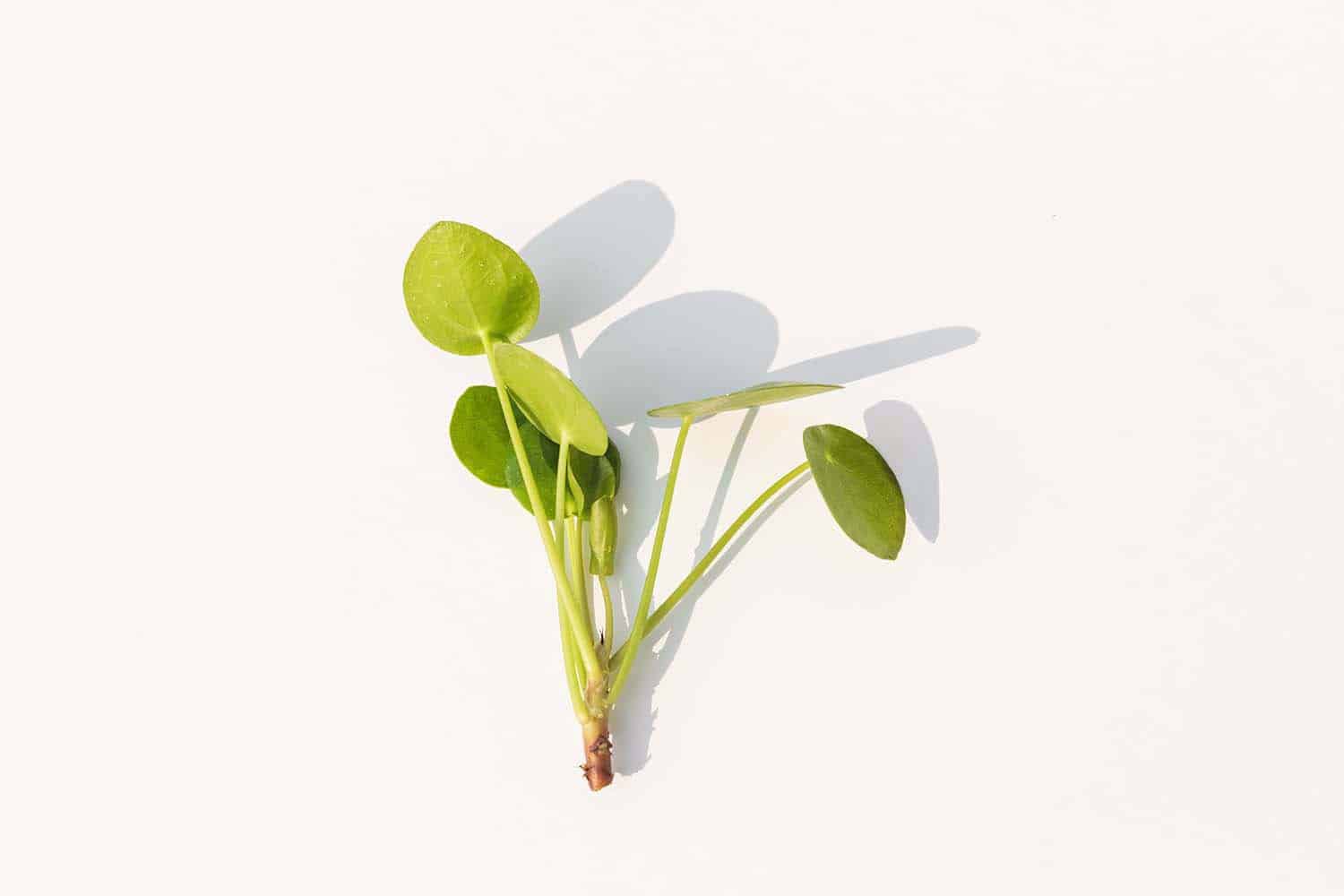
It’s crazy how fast and full they’ll grow when you don’t make any cuttings. I also have a pilea that’s specifically for “sharing” that I will propagate and give to friends. I like to wait until the pup is at least three inches tall before I cut it. My favorite tool to use is an X-Acto knife, but any sharp utensil will work.
Give your cutting utensil a good rinse before cutting into your pilea. I once heard that you should think of pruning or propagating your plant like real surgery and always wash your tools beforehand. When you are ready to cut off a pup, be aware that the root system is very delicate.
There is no need to tug or pull on the pup. Gently cut the pup where it meets the dirt and it should come right up. Once you have cut it off, you can either stick the pup in water or pot it in dirt.
I prefer the water method because I like to see the roots growing through the glass. For best results, stick your little glass or vase in indirect but bright sunlight. Once you see some roots growing, you can pot it.
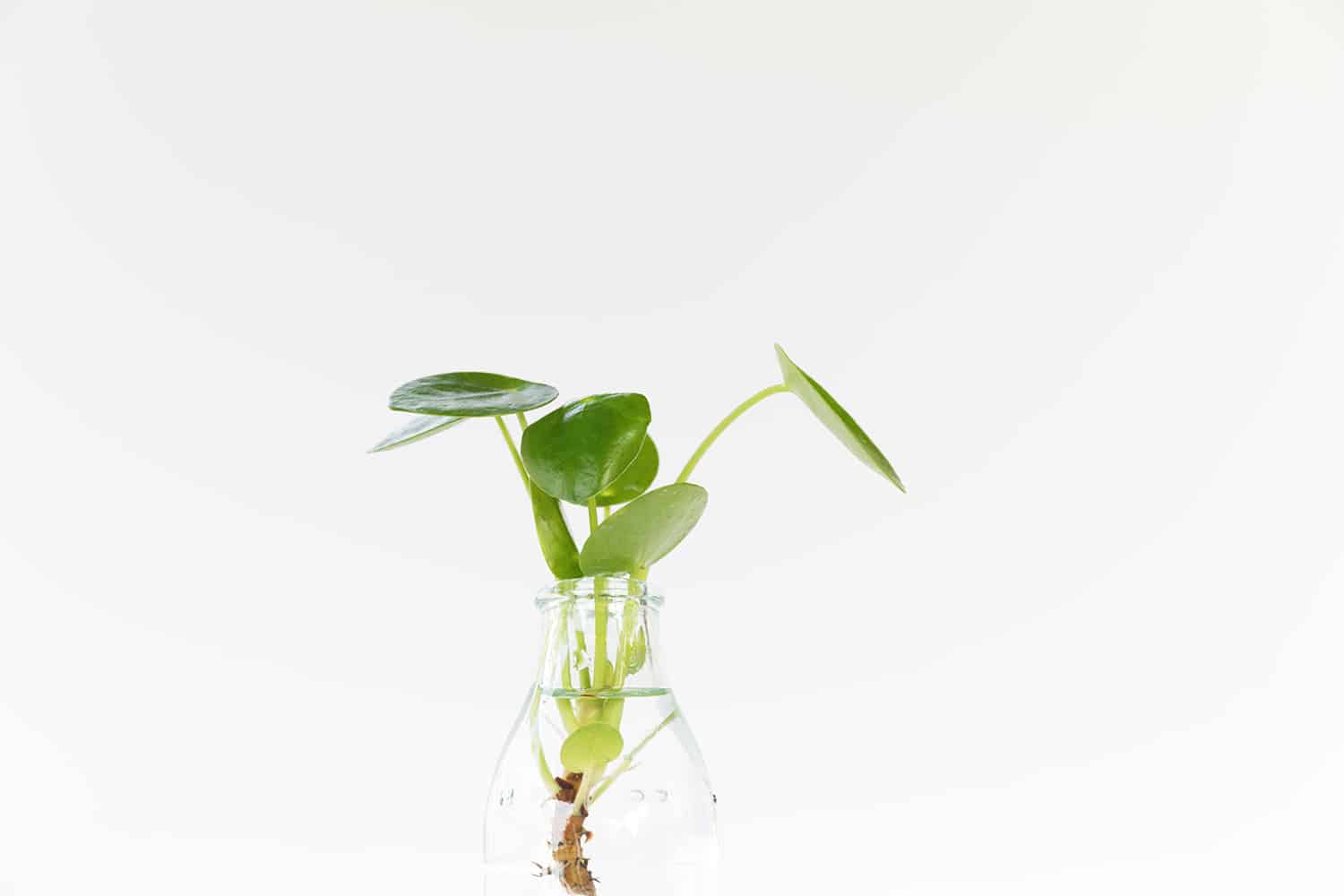
Fertilizing
If you want to give your pilea an extra boost of growth, you can fertilize in the spring and summer months. There is some debate on fertilizer, but I like to use a simple 10-10-10 formula. I prefer a liquid fertilizer because it spreads evenly through the plant.
When I water, I pour a little liquid fertilizer into the watering can. Make sure you check the back of your fertilizer and follow the label instructions.
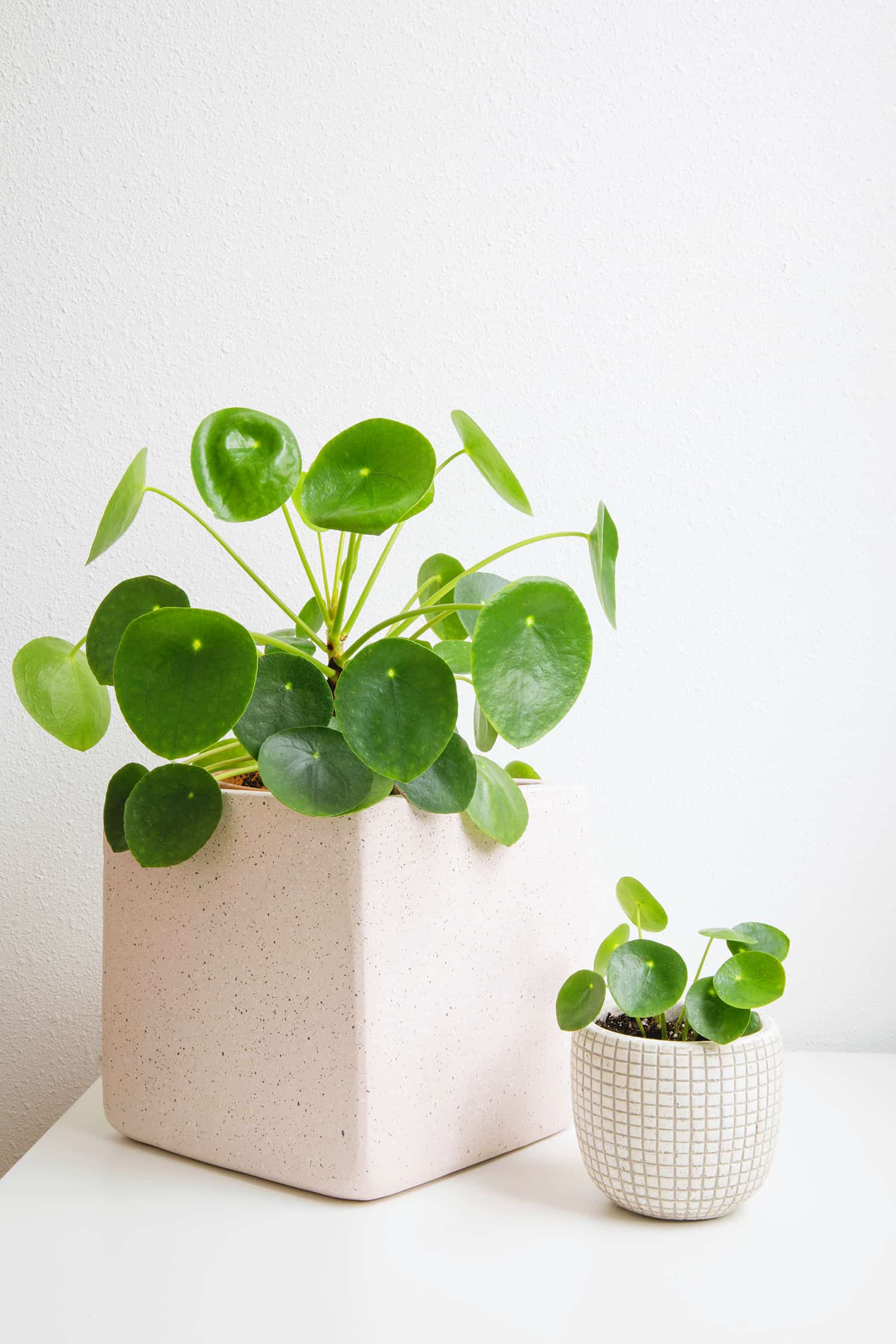
If you’re into podcasts, Bloom and Grow Radio is super informative and enjoyable!
Be sure to leave a comment if you have any favorite tips or suggestions for caring for your pilea! xo, Janae
Looking for more plant tips? Check out …
